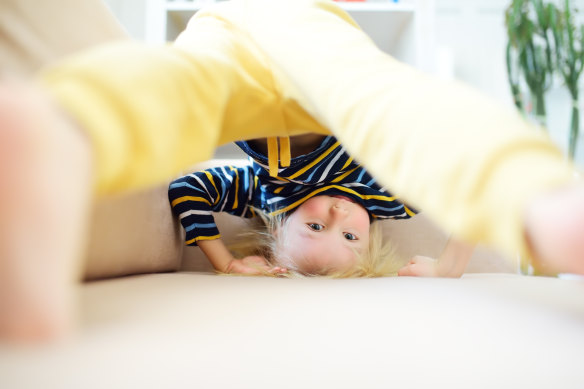Twenty minutes is all it takes: The sweet spot where kids’ boredom turns to play
There have never been more ways to keep our kids entertained. From weekend sport, to dance classes, to the screens in their hands, today’s children have no shortage of things to do. But according to parenting educator Genevieve Muir, overscheduling our kids means they can miss out on the most valuable part of childhood: play.
“Kids are being run from one activity to the next. We’re doing a lot for them, and we’re depriving them of an opportunity to find their own fun.”

Good old-fashioned play has been shown to be beneficial for the social and cognitive development of children.Credit: iStock
The mother of four and founder of Connected Parenting has recently launched a guide, “5 a Day of Play”, in collaboration with BabyLove, designed for kids of preschool age.
Dr Emily Freeman, a senior lecturer at The University of Newcastle’s School of Psychological Sciences, has studied the developmental benefits of play for children and agrees the parenting world has evolved. She says that a greater emphasis on academic learning, combined with a decrease in local green spaces and the size of people’s backyards, means there’s less of a focus on physical and active play today.
Teaching kids to be bored
It’s become a bit of a cliche to bemoan “iPad babies” – a generation of children saddled with screens by their stressed parents at the first sign of restlessness. However, while Muir says screens play a role in our cultural discomfort with boredom, she thinks the decrease in play in many children’s lives has more to do with the societal pressure parents feel to be perfect.
“[Today] Parents think it’s their job to do everything for their kids, but mostly to make their kids’ childhoods magical. And we think magical means never experiencing boredom or discomfort. And that’s actually not our job.”
While she’s a big advocate for parents playing with their kids, she says independent play is just as important, which can only come from teaching kids to get comfortable with boredom.
“You need to push through about 20 minutes of discomfort in order to get kids playing independently,” she says.
Freeman adds that screens themselves are not the enemy – it’s about how we use them.
Shared screen time, where parents talk about what they’re watching or engage in a game, “is a great way to strengthen your relationship and potentially can lead to some important conversations with them,” says Freeman.
But she says screens shouldn’t be parents’ go-to fix for boredom.
“Give them the opportunity to sit with the boredom for a bit and see what they come up with – maybe it’s going outside to collect interesting leaves or jumping in some muddy puddles and making mud pies ... the more they practice, the better they will get at it.”
Just 10 minutes a day
Muir acknowledges that most parents don’t have time to play with their kids all day long, but says you don’t have to to see the benefits.
Whether it’s a splash in a puddle outside, an impromptu dance party or a game of dress-ups, that can be enough. Investing in 10 minutes of play with your child by setting up a craft station or game is also a good way to help them transition to independent play.
“Give them 10 minutes of play with no distractions, one-on-one, and then you set that limit and say, ‘Now I can’t wait to see what you guys get up to. I bet you can’t build the LEGO tower, or I bet you guys can’t do 100 more jumps on this trampoline’, or you just slip away because they’re done with you.”
Even mini moments of connection, like blowing kisses across the room and seeing how many they can catch, can help bolster a connection with your child, says Muir.
The power of play for learning
It’s not all fun and games when it comes to play. In recent years, greater attention has been paid to the learning and developmental benefits of play for children.
According to Muir, it can be a powerful tool for a child’s emotional and social development.
“It’s through rough-and-tumble play, for example, that our kids learn where the limits are. They learn through those beautiful boundaries: ‘If you hit me, we’re gonna stop playing.’ They learn how to be gentle.”
Freeman’s research focuses on the positive developmental outcomes of play fighting, especially between dads and kids.
“Through multiple studies we’ve run, we consistently find that good quality and frequent rough-and-tumble play, that is play that is warm, fun, challenging, shares wins and losses, and is exciting, is related to children having better emotion regulation, better self-control, better relationships with their peers, and better cognitive ability.”
Other research has found that play can have academic benefits too. A 2022 systematic review from Cambridge University found that guided play was just as effective as traditional teacher-led play when it came to literacy, numeracy and thinking skills, and was even more effective when it came to some math skills for children up to the age of eight.
Make the most of your health, relationships, fitness and nutrition with our Live Well newsletter. Get it in your inbox every Monday.